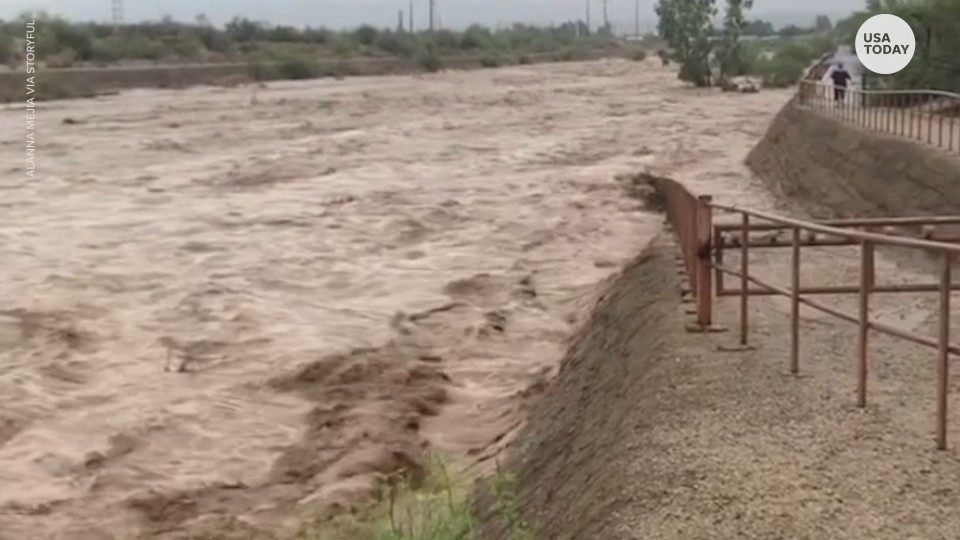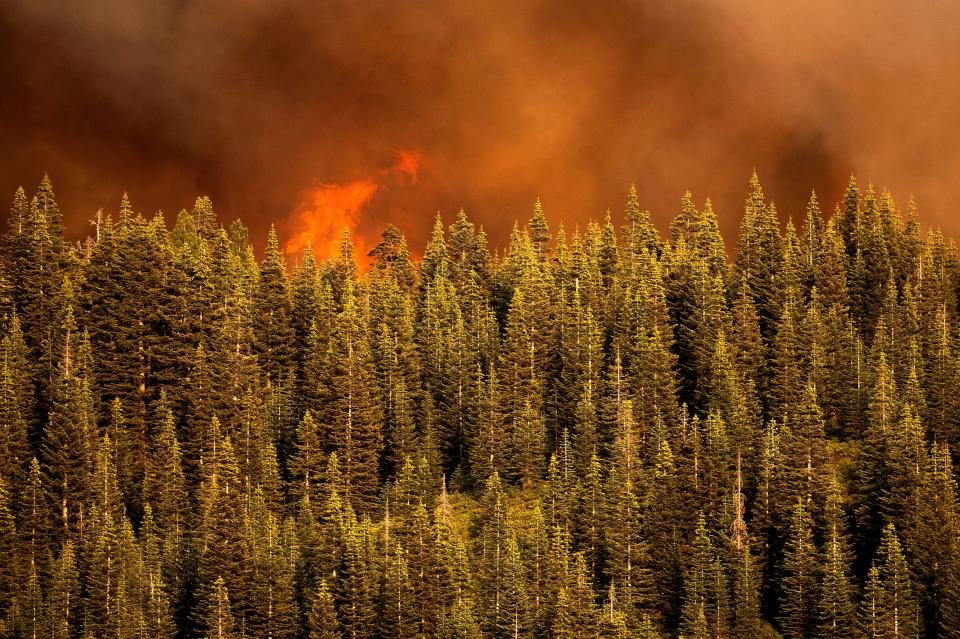Wildfire-weary West faces thunderstorms and potential flash floods; progress made against Bootleg Fire
SAN FRANCISCO – Western states under siege from numerous wildfires may face a new threat this week as thunderstorms head their way, raising the possibility of flash flooding.
The National Weather Service said the storms are expected to hit the interior western states, particularly the area from the Great Basin to the Rockies, and may help douse some fires but won’t provide relief to drought-stricken California.
“Heavy rainfall from monsoonal activity will continue the potential for flash flooding, especially in complex terrain, burn scars, and urban areas” in those regions, the weather service said.
The first major manifestation of the danger posed by the storms came Sunday when mudslides from heavy rains caused “extreme damage” to Interstate 70 in Glenwood Canyon, Colorado, and left it blocked with piles of boulders and logs, state transportation officials said.
Lanes in both directions of the highway, a major transportation corridor between the Rocky Mountains and the West Coast, remained blocked by debris that flowed out of the burn scar from a wildfire last year in the Grizzly Creek area.
Spots left barren of vegetation by the rash of wildfires throughout the West are especially prone to flash flooding when pelted by heavy rainfall. Parts of Nevada, Utah, Colorado, New Mexico, Idaho, Washington and Montana are under a flood watch.
Mixed blessing: Southwest monsoon rain brings drought relief – but also dangerous flooding
This has been the most active monsoon season since 2015, in sharp contrast to last year’s uneventful season. The large influx of rainfall has been a boon to parched states such as New Mexico and Arizona — Tucson registered its wettest July in history with 8.06 inches of rain, nearly four times the norm — but it has also had tragic consequences. At least five people have died because of flooding, and several others are missing.
AccuWeather senior meteorologist Alex Sosnowski said that as opposed to last year, when the high-pressure area from the monsoon was set up to the west and blocked the flow of moisture from the Gulf of Mexico, this year it has been farther east over the Rockies and Plains.

“The clockwise circulation around the high is what pulls the moisture up from the Gulf of Mexico and Gulf of California into the Southwest,” Sosnowski said.
That, in turn, nurtures the downpours, but they haven’t reached Oregon or California, where two of the country’s largest wildfires burn, although not as wildly as in previous days.
Firefighters in Oregon reported progress in the battle against the Bootleg Fire, the nation’s largest at more than 646 square miles in the remote southern part of the state. Containment increased from 56% on Saturday to 74% on Sunday.
“That reflects several good days of work on the ground where crews have been able to reinforce and build additional containment lines,” spokesman Al Nash said.
Authorities in the Northern California counties of Butte and Plumas canceled evacuation orders near another major blaze, the Dixie Fire, which had charred more than 388 square miles in mountains where 42 homes and other buildings have been destroyed. The fire was 33% contained Sunday, but authorities warned that unpredictable winds and extremely dry fuels keep the risk of flare-ups high.
Dry conditions and powerful winds also made for dangerous fire conditions in Hawaii, where a fast-moving wildfire on the Big Island grew to 62.5 square miles, prompting evacuation orders.

The outburst of fires through much of the American West has contaminated the air in large portions of the country, reaching the East Coast and leading to air quality alerts Sunday in parts of the West and Midwest that include the Northern Rockies. Also, Canadian wildfires resulted in pollution alerts in Wisconsin, Minnesota and Iowa.
Wildfires emit huge volumes of microscopic smoke particles that researchers say can be harmful if breathed in and lead to both immediate and long-term health impacts. Children, the elderly and people with underlying health conditions are especially at risk.
On Friday, President Joe Biden and Vice President Kamala Harris met with governors from California, Idaho, Minnesota, Montana, Oregon, Washington and Wyoming, the second such meeting to discuss fire prevention and firefighting efforts.
“Our resources are already being stretched to keep up,” Biden said. “We need more help.”
That same day, California Gov. Gavin Newsom signed a proclamation to incentivize big companies to conserve energy as the state prepares for potential rolling power outages because of high heat conditions. Drought has minimized hydroelectric output, and the state could face shortages of 3,500 megawatts on high-heat days.
Contributing: Elinor Aspegren and Jeanine Santucci, USA TODAY; The Associated Press
This article originally appeared on USA TODAY: Wildfire-ravaged West now faces thunderstorms, possible flooding

 Yahoo Movies
Yahoo Movies 
